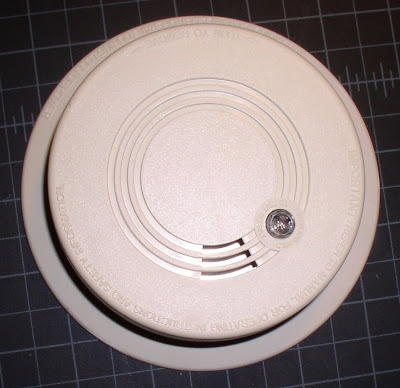Persistent Efflorescence

Despite my efforts to improve my patio problem, the "efflorescence" persists right through the epoxy paint! Its now creeping beyond the concrete area I patched, finding a new border to etch the surface. The paint is flaking off already after just 2 months!
Here is what Wikipedia says about Efflorescence:
"Efflorescence, in chemistry, is the loss of water (or a solvent) of crystallization from a hydrated or solvated salt to the atmosphere on exposure to air.
Primary Efflorescence
Primary efflorescence is named such, as it typically occurs during the initial cure of a cementitious product. It routinely occurs in masonry construction, particularly brick, as well as some firestop mortars, when water moving through a wall or other structure, or water being driven out as a result of the heat of hydration as cement stone is being formed, brings salts to the surface that are not commonly bound as part of the cement stone. As the water evaporates, it leaves the salt behind, which forms a white, fluffy deposit, that can normally be brushed off. The resulting white deposits are referred to as "efflorescence" in this instance. In this context efflorescence is sometimes referred to as "saltpetering." Since primary efflorescence brings out salts that are not ordinarily part of the cement stone, it is not a structural, but, rather, an aesthetic concern.
Secondary Efflorescence
Secondary efflorescence is named such as it does not occur as a result of the forming of the cement stone or its accompanying hydration products. Rather, it is usually due to the external influence of concrete poisons, such as chlorides. A very common example of where secondary efflorescence occurs is steel-reinforced concrete bridges as well as parking garages. Saline solutions are formed due to the presence of road salt in the winter. This saline solution is absorbed into the concrete, where it can begin to dissolve cement stone, which is of primary structural importance. Virtual stalactites can be formed in some cases as a result of dissolved cement stone, hanging off cracks in concrete structures. Where this process has taken hold, the structural integrity of a concrete element is at risk. This is a common traffic infrastructure and building maintenance concern. Secondary efflorescence is akin to osteoporosis of the concrete."

These pictures are of my freshly painted Epoxy patio floors. Obviously no sense in my proceeding with the "faux tile" painting project (see earlier posts)... this first coat of Epoxy paint is not adhering, as you can see. The stubborn efflorescence has found a new place to rise to the surface, just beyond the edge of the concrete patch work -- repairing the previous efflorescence damage -- patched just two months ago.

Wikipedia closes its explanation with protection tips:
Protecting Against Efflorescence
"It is possible to protect porous building materials such as brick, tiles, concrete and paving against efflorescence by treating the material with an impregnating, hydro-phobic sealer. This is a sealer which repels water and will penetrate deeply enough into the material to keep water and dissolved salts well away from the surface. However, in climates where freezing is a concern, such a sealer may lead to damage from freeze/thaw cycles.
Efflorescence can often be removed using phosphoric acid. After application the acid dilution is neutralized with mild diluted detergent, and then well rinsed with water. However, if the source of the water penetration is not addressed efflorescence may reappear.
Common rebar protective measures include the use of epoxy coating as well as the use of a slight electrical charge, both of which prevent rusting. One may also use stainless steel rebar.
Certain cement types are more resistant to chlorides than others. The choice of cement, therefore, can have a large effect upon the concrete's reaction to chlorides."
Since this problem is happening in Phoenix, Arizona -- the "arid zone"... the Sonoran desert -- on a concrete slab that is over 12 years old, I am perplexed as to why this is such a problem and also how to resolve it.


Comments